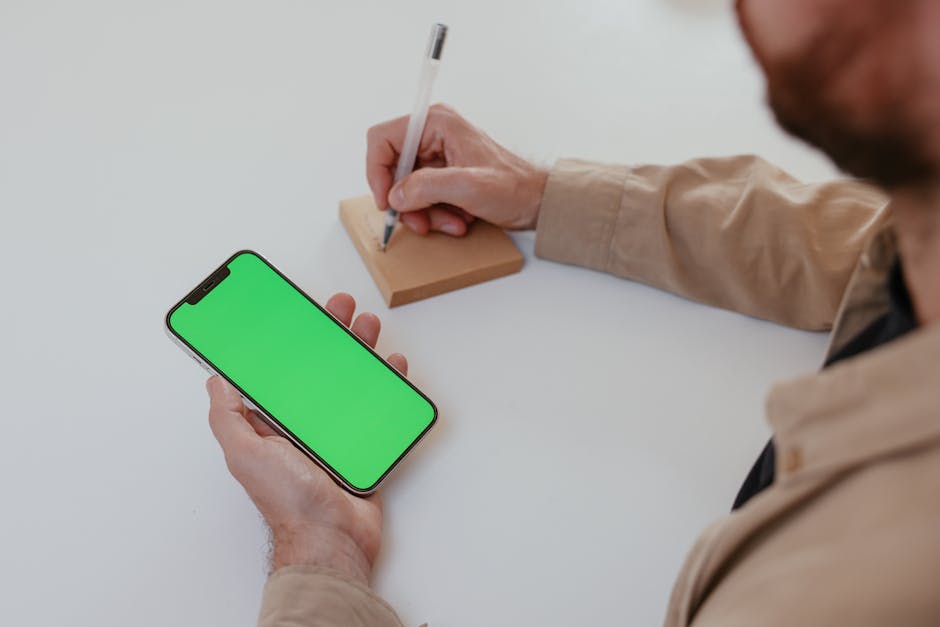The Art of Making Invisible Apps: Balancing Automation and User Experience
“Creating apps that work seamlessly in the background is a delicate balancing act. This article explores the challenges and solutions for designing 'invisible' workplace applications that provide enough feedback to users without becoming intrusive, drawing lessons from real-world implementation experiences. ”

The Art of Making Invisible Apps: Balancing Automation and User Experience
In today's fast-paced workplace, the best technology often goes unnoticed—until it stops working. This paradox presents a unique challenge for developers creating workplace management solutions: how do you design an app that's invisible enough to stay out of users' way, yet visible enough that people understand its value?

The Invisible App Paradox
"Nobody notices when things go right," states Zimmerman's Law of Complaints. This simple observation captures the fundamental challenge of designing automated workplace technologies. When everything functions perfectly, users rarely acknowledge the system's presence. It's only when something breaks that the technology suddenly becomes the center of attention.
For workplace management solutions, this creates a delicate balancing act. Make your app too visible, and it becomes intrusive; make it too invisible, and users forget it exists—or worse, never learn how to use it properly.
The Danger of Complete Invisibility
While the concept of technology that "just works" in the background sounds appealing, complete invisibility presents several critical problems:
-
Users never learn the system: Without proper feedback and visibility, users don't develop mental models of how the technology works, making troubleshooting nearly impossible.
-
Silent failures: When invisible apps malfunction, they often fail silently in the background, creating problems that users might not attribute to the app.
-
Lack of credibility: If users can't see how decisions are made, they're less likely to trust the system's outputs.
-
Missed feedback opportunities: Without regular user engagement, developers lose valuable insights about how their product is being used in real-world scenarios.

Earning Invisibility Through Visibility
The solution isn't to abandon the goal of seamless automation but to recognize that invisibility must be earned. Here are key strategies for making invisible apps that actually work:
1. Create Decision Moments
Even when your system can automate everything, sometimes it's better to ask for user input. For example, a room booking system might detect when a meeting is about to end and ask, "This room is booked in 10 minutes. Find another one?"
These decision moments serve multiple purposes:
- They create visibility at precisely the moment when the app is providing value
- They give users a sense of control over the automated system
- They provide opportunities for feedback that developers can act upon
Decision prompts are the app's version of humble brags: "Hey, I'm doing something useful here. Do you want to be involved?"
2. Implement Strategic Notifications
Notifications, when used judiciously, can transform an invisible app into a valuable workplace companion. The key is to connect users to context at moments when the information is most relevant and least intrusive.
For instance, a workplace strategy app might notify a team lead when a collaborator arrives at the office, creating an opportunity for an impromptu meeting. These touchpoints remind users of the app's presence while delivering genuine value.
3. Build a Neighborhood of Devices
The device that triggers an action doesn't have to be the one that shows feedback. By recruiting other devices in the environment to display updates, you can multiply points of ambient feedback while keeping the primary experience unobtrusive.
In a modern office setting, this might include:
- Wall-mounted tablets showing room availability
- Desktop notifications when colleagues arrive
- Digital signage updating with real-time occupancy data
This approach creates what we might call a "UI-less" experience—not because interfaces disappear, but because they migrate to whatever screens are most convenient in the moment.

Practical Implementation Tips
When designing invisible apps for workplace management, consider these practical guidelines:
Start with 95% Automation
Rather than attempting 100% invisibility from the start, aim to automate 95% of tasks while requiring manual input for the final 5%. This approach educates users about the system's capabilities while still delivering significant time savings.
Provide Clear Feedback Loops
Users need to know when the system is working correctly. Design feedback that's:
- Timely but not intrusive
- Informative without requiring action
- Visible across multiple touchpoints
Create "Show-Off" Moments
When you sell something that feels like the future, people want easy ways to demonstrate it. Build in features that create those "wow" moments that users can share with colleagues, increasing organic adoption throughout the organization.
Ask These Five Questions
When evaluating your invisible app design, consider:
- How would a user discover if the app stopped working?
- What events are worth interrupting a user's day for?
- How many decisions does the user need to make per day or week?
- What other things change when the app is working? (Think secondhand feedback)
- How often does the app have new information to share?
Finding the Balance
The goal isn't to make workplace apps completely invisible—it's to make them just invisible enough. As data analysis transforms our understanding of workplace dynamics, the most successful automation solutions will be those that find the sweet spot between seamless background operation and meaningful user engagement.

The Future of Invisible Apps
As workplace technologies continue to evolve, we're likely to see more sophisticated approaches to invisible app design. The future points toward:
- Contextual intelligence: Apps that understand not just where users are, but what they're trying to accomplish
- Cross-device experiences: Seamless transitions as users move between smartphones, tablets, desktops, and environmental displays
- Ambient intelligence: Systems that fade further into the background while maintaining appropriate visibility
For IT managers and facility administrators implementing these solutions, the key is to remember that completely invisible isn't the goal. The most elegant solution is one that's just visible enough to build trust and deliver value, while staying out of the way when not needed.
Conclusion
Creating invisible apps for workplace management is a delicate balancing act. While the temptation exists to automate everything and hide the technology completely, the most successful implementations recognize that invisibility must be earned through strategic visibility.
By carefully designing decision moments, implementing thoughtful notifications, and creating networks of feedback devices, developers can create solutions that deliver the magic of automation without the frustration of opacity. In a world where the distributed workforce is becoming the norm, these principles will only grow more important.
Remember: There's an elegance in minimalism, but there's also a danger in being overlooked. The art of making invisible apps isn't about disappearing completely—it's about being present exactly when and where users need you.